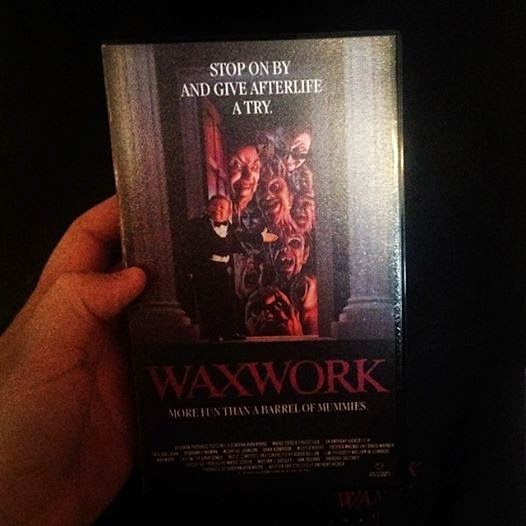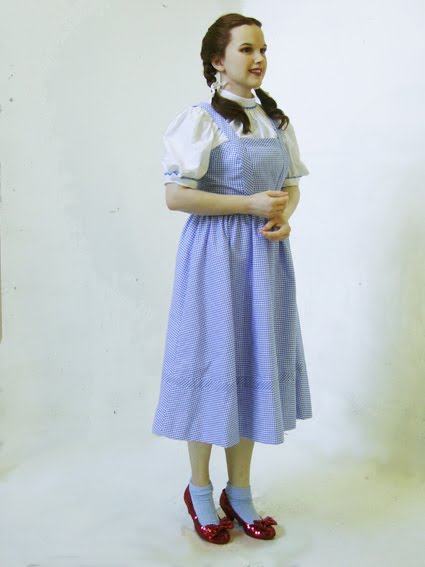

Manzolini’s wife, Anna Morandi, who learned wax moulding techniques from her husband, soon exceeded them all in her skill. The Marquis de Sade considered them masterpieces, and praised their powerful and ‘fearful truth’: ‘These scenes of plague appealed to my cruel imagination,’ he wrote in his journal, ‘and I mused, how many persons had undergone these awful metamorphoses thanks to my wickedness?’īust of Giovanni Manzolini dissecting a heart (1755), Anna Morandi. They have the compact horror and seasick hues of Géricault’s The Raft of the Medusa, and were displayed in the Uffizi before being transferred to La Specola, Florence’s wax museum.
#Waxworks figures collection series
Zumbo was employed by Cosimo III, the penultimate Medici Grand Duke of Tuscany, to make a series of miniature theatres that record baroque scenes of plague and syphilis: gruesome cribs that illustrate both the process of putrescence and the consequences of vice. In the 18th century wax began to be used by artists working in tandem with anatomists for scientific purposes. The art historian Aby Warburg thought that the individualised portrait that emerged in the Renaissance built on this ‘fetishism of the waxwork cult’. Until then, waxworks were largely confined to life-size effigies of saints and anatomical ex-votos, sometimes depicting limbs and organs. The head of an executed criminal, his mouth open and eyes frozen in the final spasm of death, is rendered in wax moulded over a real human skull, the epidermis removed to show the man as machine beneath. It will almost certainly disappoint those who are looking for something like the horror of The Cabinet of Dr Calgari or of the classical films of the '30s.At the end of the 17th century, working in Bologna’s hospital morgues, the Sicilian sculptor Gaetano Giulio Zumbo became the first artist to make anatomical teaching models using coloured wax. It may none-the-less disappoint them, as there was better work before it.
#Waxworks figures collection movie
This movie should probably be watched by those with a keen interest in general cinematic history, or in German Expressionist films. The wrapping story is the weakest tale here, most especially at the point where the nightmare ends. It is note-worthy for doing a fair job of capturing the logick and geometry of dreams. The third episode isn't so mu ch a story as it is a nightmarish dream sequence. The second episode, also a fantasy but a rather dark one featuring Ivan the Terrible, has the benefit of a much stronger story, with a bit of well-handled surrealism in a mechanism of doom, and a brilliant performance by Conrad Veidt as Ivan. However, the story itself is dragged-out and the sets are weak. The first episode is a relatively light fantasy, set in Baghdad perhaps a millennium ago, and carried by a fine performance from Emil Jannings (though I don't much care to praise Jannings). The graphics and blurbs of the Kino release makes it appear that this is a horror film, but it would be more accurate to represent it as an anthology of three episodes, at least one of which cannot fairly be said to be a horror tale, held-together with a wrapping tale. More for those interested in cinematic history than for horror buffs Seen as "horror", we were both rather disappointed with this film seen as entertainment, it's just about o.k. He then has three dream sequenc es of these figures, all including himself and the beautiful daughter of the proprietor of the Wax Cabinet: The two first parts are no real horror stories at all and the third one is very thin, with expressionist sets, copied very closely on "The Cabinet of Dr Caligari" and similar German horror films lots of double exposures etc., but with no real horror feeling. The plot is very thin, depicting a young poet who gets a commission to write background texts for 3 wax figures (there are actually four of them, but for some obscure reason, only three of the tales are included in the film) Haroun-al-Rashid, Kalif of Baghdad Ivan the Terrible, Czar of Russia Jack the Ripper, 19th.

This has caused us to view a host of silent horrors: This one is supposed to be "interesting" for silent horror film buffs, but its only benefits are the fine performances of the great German actors, e.g. This film was bought for my daughter, who's working on her masters degree in film science: A paper on European (especially German) silent horror films compared to Hollywood ones of the same period.


 0 kommentar(er)
0 kommentar(er)
